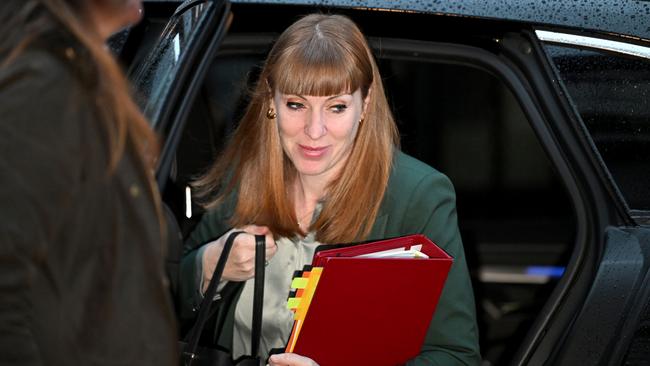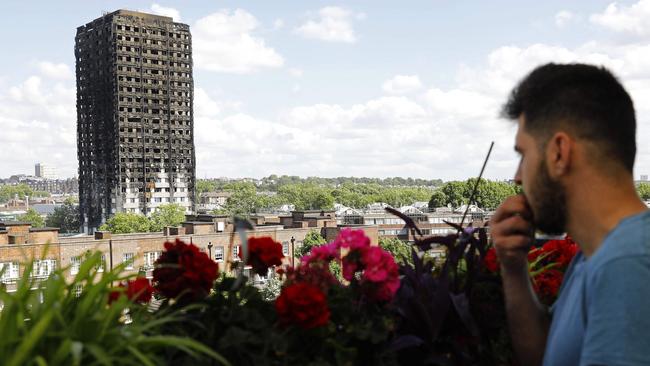Grenfell Tower talks turn into a ‘car crash’ for UK Deputy PM
As Angela Rayner arrived at the meeting in west London, it was clear that she was about to undertake one of the toughest tasks of her political career.

As Angela Rayner arrived at the Museum of Brands in west London on Wednesday night, it was clear that she was about to undertake one of the toughest tasks of her political career.
Faced by a room of those affected by the Grenfell Tower disaster, Britain’s Deputy Prime Minister said that after years of inaction the residential block would be dismantled to ground level. Her words provoked a collective gasp, even though it was known that an announcement on the fate of the building, where 72 people died in 2017, was coming.
To many of those at the meeting who view the charred remains of the 24-storey tower as a sacred site, the suddenness and finality of the plan caught them off guard.
Rayner had acknowledged the seriousness of what she was communicating, but when she stopped speaking she found herself confronted by a torrent of angry questions.
What ensued was described by one guest as a “car crash”.
Voices were raised and tempers frayed before Rayner eventually left the building, close to Grenfell’s remains, flanked by her security guards.
“It was such a horrible meeting,” said Karim Mussilhy, vice-chairman of the Grenfell United group, which represents some bereaved families and survivors. “She’s just gone about it completely the wrong way. And I think they’ve completely messed up the relationship with the Grenfell families.”
Mussilhy said that Rayner was repeatedly asked to state how many families she had consulted about the decision without being able to answer.
“You could see she was getting quite flustered and angry and then shortly after that she was escorted out of the room,” he said.
At one point, guests were asked to show their hands if they had been consulted directly about the demolition. Very few went up.

Rather than the decision itself, survivors and victims said that the frustration was at the way in which it had been reached, provoking a sense of deja vu that their voices were again not being listened to by those in power.
A public inquiry last year found that the 72 deaths caused by the fire were avoidable and followed “decades of failure” in which residents were ignored and politicians failed to heed serious safety warnings.
After years of indecision by successive Conservative ministers, the government announced in December that the fate of the site would be announced in February.
Structural engineers had recommended in 2019 that the ravaged upper section of the building should be demolished at least down to level 10. If retained below that floor, it would still require repairs and strengthening.
Because the tower has been propped up, it is stable and safe for people living nearby. But engineers warned that the internal concrete would degrade through weather exposure, and demolition would become more dangerous the longer it was delayed.
Some survivors had hoped that the demolition could be done in two stages, with the lower sections kept standing for possible incorporation into a memorial on the site, retaining Grenfell’s place in the west London skyline.
Emma O’Connor, a resident on the 20th floor who escaped the fire, told the BBC that she wanted the building to be retained up to its 10th floor as a “standing memorial”. “We understand it’s unsafe but if it’s out of sight, it will be definitely be out of mind for those responsible for the tragic deaths,” she said.
Rayner held several consultation meetings last month about her plans but it is understood that some families did not receive letters and the timings of some engagements changed at the last minute, leaving some to view the process as shambolic.
The families of the victims also wanted to hear from Rayner directly about plans before a decision was announced, but this did not happen.
The Deputy Prime Minster acknowledged the seriousness of what she was about to announce before her conclusive words on the fate of the building – “to the ground” – which caused shock in the room.
Mussilhy, sitting at the back, stood up and asked Rayner to tell the room how many families she had spoken to.
“She turned around and she said, ‘I can’t, I can’t give you that.’ Everyone got really upset and angry,” Mussilhy said.
“We understand it’s inevitable that the tower can’t remain the way it is indefinitely.
“But you need to have a meaningful consultation and conversation with the bereaved families. Our families’ remains are still embedded in that concrete.”
The Times



To join the conversation, please log in. Don't have an account? Register
Join the conversation, you are commenting as Logout